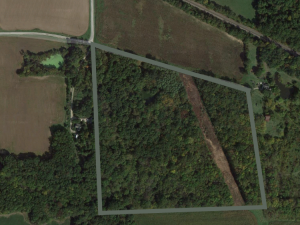My Uncle told me that the annual property taxes on the Timber Pasture were modest, about $60 a year.
He explained that the land was considered forest by the state, and consequently was taxed at a very low rate. No one likes to pay taxes, but this seemed reasonable to me.
I had mixed feelings about calling the County Tax Assessor. I didn’t wish to draw undue attention to my little patch of forest, but I hadn’t received a property tax bill for this year, and was worried that they somehow had forgotten about me or had an incorrect address. My darker fantasy was that the land was about to be sold for tax delinquency. I placed the call.

The Tax Assessor couldn’t have been nicer or more helpful. She explained that the newest tax bills hadn’t yet been calculated or sent, but she was glad I called. She had some good news and some bad news for me.
The bad news was that according to State law, whenever land that is in the “Forestry Program” changes hands, it automatically leaves the “Forestry Program”. It then becomes eligible for taxation at the normal, “Residential” rate. In my case, that rate would amount to $1600 each year. This revelation troubled me.
But the good news was that I could re-apply for “Forestry Program”, and if I did it quickly enough, there would be no change in the original tax rate.
“How do I re-apply,” I asked.
“There’s a form you have to fill out, and then submit it to the District Forester. If he approves your plan, he sends it to the Secretary of State’s Office, who notifies me that you’re back in the Forestry Program.”
“This form…is it something I can fill out myself?”
“Maybe. The form asks about the different soil types on the property. Also, it wants you to list the different trees, the invasive species, and your strategy from removing the invasives. It wants you to list your 10 year goals and plans for managing the forest. Do you know anything about this?”
I didn’t know anything about any of it.
“Most people hire a Professional Forester to prepare their Forest Management Plan. It will cost you around $400 to $500, but you’ll make that up the first year you’re not taxed at the Residential Rate.”
This Professional Forester Strategy sounded good to me. I hadn’t been planning to spend $500, but sometimes plans must change. The Assessor directed me to the State Forestry website, where they had a lengthy list of “Consulting Professional Foresters.” I picked one close to the Timber Pasture and gave him a call.
